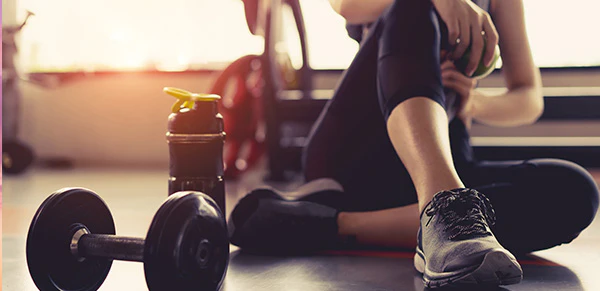Planning can make all the difference when it comes to sticking to your workout regimen and setting achievable fitness goals. Here are some helpful tips that will ensure your weekly sessions run smoothly and you reach them with success.
Rest periods are essential in order for muscles to recover and prevent injury, as well as build strength and mobility. By resting between workouts, resting will also increase strength and mobility gains.
1. Know Your Goals
Understanding what you want out of your exercise regimen will help keep you on the right path. Without an objective, it can be easy to become overwhelmed and give up altogether.
Setting SMART goals, or specific, measurable, attainable, realistic and time-based targets, can be an excellent place to start when setting fitness goals. For instance, if your objective is to put on five pounds of muscle over time, make that specific number your aim and work toward it slowly over time.
Try setting workout milestones you can celebrate. For instance, when you complete 14 consecutive days of going for a scenic walk or attending aqua aerobics class, treat yourself with something fun. Also keeping track of your progress using an app, journal or calendar can provide further motivation.
2. Know Your Strengths
Discovering your strengths is the cornerstone of developing an effective workout routine – regardless of whether it be with a personal trainer or independently. Knowing and capitalizing on them allows you to set and meet goals while feeling empowered, engaged, and contented with yourself and with life in general.
To identify your strengths, think about what activities come naturally to you or that bring pleasure. A scientifically validated strength test like HIGH5 may also provide valuable insight into your talents and how best they can be utilized within society.
Strengths can range from specific skills, like writing or public speaking, to personal qualities like empathy or curiosity. Tapping into these strengths may even mean altering both your work and personal lives by taking on side projects that align with your passions or finding roles that suit them – often more productive than dwelling on weaknesses that drain energy away.
3. Know Your Limits
As someone new to exercising, this point is especially crucial. Pushing yourself too hard could have negative health implications; if you find yourself constantly exhausted or experiencing pain during physical activity, take note: your body may be signalling for you to take a breather or slow down or stop altogether.
Workout Splits
Picking workout splits is another key aspect of your routine. Overworking one muscle group two days in a row will cause it to break down and need time to heal back up again, thus diminishing effectiveness.
An effective weekly workout should consist of three strength training (one upper body, one lower body and one full-body session) sessions and three cardio sessions per week. This approach helps build strength and endurance while preventing overtraining; however, you should always consider your personal schedule and lifestyle when determining which days you’ll work out each week.
4. Know Your Rest Periods
Rest periods are an integral component of any workout routine that often gets neglected. During these rest periods, clients should relax, prepare their equipment for the next set, and attend to any needs (e.g. water/bathroom). By resting between sets during a work set, clients can promote growth hormone release while helping their bodies recover from fatigue while using proper form and technique for their reps in subsequent sets, helping prevent injuries in turn.
The length of a client’s rest periods depends on their training goals. For instance, clients working on strength exercises that require their neurological system require longer rest periods than those looking to achieve hypertrophy training, so shorter rest periods would likely be more suitable and help clients reach their fitness goals more efficiently. Incorporating rest periods into workout routines will enable clients to reach fitness objectives more efficiently.
5. Know Your Equipment
Have the proper fitness equipment is crucial, from using a foam roller for recovery to making sure you have everything needed to perform certain exercises. Finding shoes designed specifically for running, yoga mats or weights will make workouts more comfortable, leading to improved performance.
Understanding how to use your equipment effectively is also critical for maximum results. Knowing how to properly squat can mean the difference between smashing out 10 reps without injury and performing them improperly – or injury!
After finishing an exercise session, it’s essential to relax and stretch out your muscles. Doing this will help avoid injury while increasing flexibility – ultimately decreasing muscle soreness. Furthermore, using an app or writing down details of each workout session can be useful to track progress over time.
6. Know Your Nutrition
Fueling up is key to performance, recovery and overall health. By eating foods rich in essential nutrients, you’ll be able to train harder while simultaneously maintaining balanced energy levels.
Making exercise part of everyday life doesn’t require overhauling your schedule or visiting the gym every time – for example, keeping a pair of walking shoes in your car or office allows for power walks or quick resistance exercises to fit between meetings.
At least an hour before exercising, consuming low-fiber carbohydrates such as fruit or whole grain cereal with skim milk will provide natural sources of energy and will keep you feeling strong throughout your session. Meals should consist of protein and healthy unsaturated fats for sustained energy and muscle development.
Proper fitness nutrition should be seen like fueling up a high-performance sports car: vitamins, minerals, antioxidants and fiber from real whole food nourish every cell in your body so you can perform at your best.




